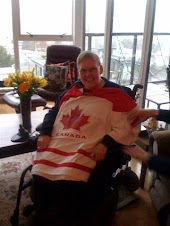Who gets ALS?
As many as 20,000-30,000 people in the United States have ALS, and an estimated 5,000 people in the United States are diagnosed with the disease each year. ALS is one of the most common neuromuscular diseases worldwide, and people of all races and ethnic backgrounds are affected. ALS most commonly strikes people between 40 and 60 years of age, but younger and older people also can develop the disease. Men are affected more often than women.
In 90 to 95 percent of all ALS cases, the disease occurs apparently at random with no clearly associated risk factors. Patients do not have a family history of the disease, and their family members are not considered to be at increased risk for developing ALS.
About 5 to 10 percent of all ALS cases are inherited. The familial form of ALS usually results from a pattern of inheritance that requires only one parent to carry the gene responsible for the disease. About 20 percent of all familial cases result from a specific genetic defect that leads to mutation of the enzyme known as superoxide dismutase 1 (SOD1). Research on this mutation is providing clues about the possible causes of motor neuron death in ALS. Not all familial ALS cases are due to the SOD1 mutation, therefore other unidentified genetic causes clearly exist.

































































































































































No comments:
Post a Comment